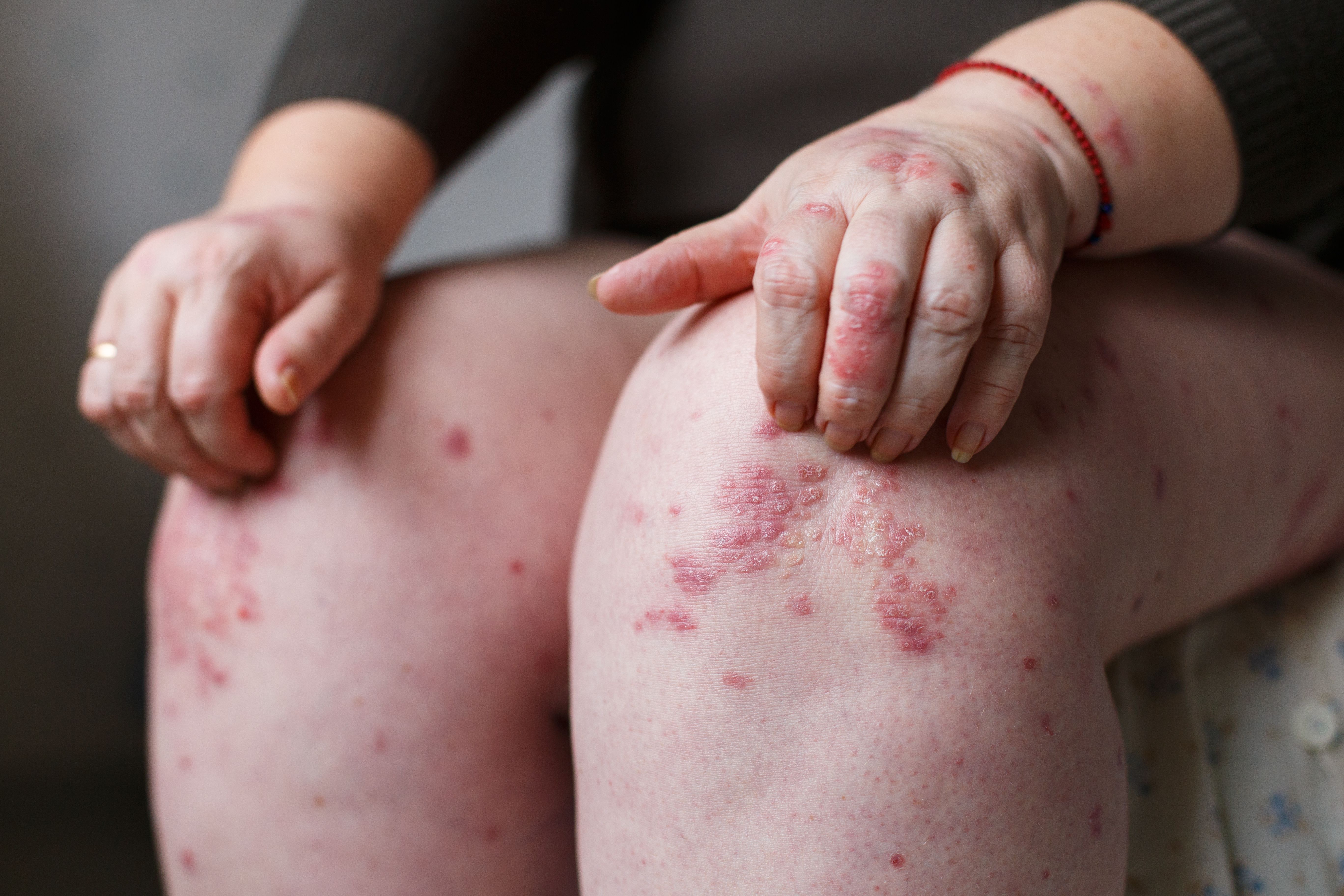- Case-Based Roundtable
- General Dermatology
- Eczema
- Chronic Hand Eczema
- Alopecia
- Aesthetics
- Vitiligo
- COVID-19
- Actinic Keratosis
- Precision Medicine and Biologics
- Rare Disease
- Wound Care
- Rosacea
- Psoriasis
- Psoriatic Arthritis
- Atopic Dermatitis
- Melasma
- NP and PA
- Skin Cancer
- Hidradenitis Suppurativa
- Drug Watch
- Pigmentary Disorders
- Acne
- Pediatric Dermatology
- Practice Management
- Prurigo Nodularis
- Buy-and-Bill
Publication
Article
Dermatology Times
Pruritus characteristics in psoriasis
Author(s):
Pruritus frequently afflicts psoriasis patients, but few studies explore the role of pruritus in regards to disease activity, pharmacotherapy or demographics. This study attempts to fill that gap.
Pruritus frequently afflicts psoriasis patients, but few studies explore the role of pruritus in regards to disease activity, pharmacotherapy or demographics. (Ольга Тернавская - stock.adobe.com)

Psoriasis is a common immune-mediated skin disease. Recent psoriasis studies focus on pathophysiology, links to comorbid conditions, and psoriasis response to novel therapies. A symptom that frequently afflicts psoriasis patients is pruritus; however, there are few studies describing the links of pruritus in psoriasis with regards to disease activity, pharmacotherapy or demographics.
A study published in Advances in Dermatology and Venereology in April of 2019 focused on pruritus in psoriasis. The study was led by Jacek Szepietowski, M.D., from the Department of Dermatology in Wroclaw Medical University, Poland. The aim of the study was to describe the prevalence of pruritus in psoriasis as well as to detail the clinical characteristics.
RELATED: Presentation and management of the neuropathic itch
A cross-sectional study was performed. 143 patients (83 males and 60 females) with psoriasis vulgaris were included in the study. The subjects included provided a detailed history, laboratory tests, and physical exams were completed that included PASI, BSA and physician's global assessment.
The study showed that the prevalence of pruritus is psoriasis is 72%. Chronic pruritus was present in both young patients and older patients with psoriasis. Patients with pruritus had high rates of xerosis. In this patient cohort the mean values for PASI was 14.6 ± 9.5 points. The mean value for BSA was 27% ± 21%. The mean value for PGA was 2.1 ± 1.0 points.
There was a correlation between systemic comorbidities and pruritus, specifically anemia was associated with higher itch intensity. Another comorbidity that was associated with increased pruritus was diabetes. Interestingly, aspirin use was also more common in patients with pruritus.
Several variables were negatively associated with pruritus in psoriasis. For instance emollients were associated with decreased chronic itching. Several comorbid conditions and medications also were negatively associated with pruritus in psoriasis such as the presence of hypertension as well as treatment with psychiatric drugs and allopurinol.
Pruritus was reported mainly in the lower limbs, back, and upper limbs with 66%, 49.5% and 47.6% of the patients reporting chronic itch in these areas, respectively. The vast majority of the subjects (77.7%) complained of pruritus in the pathologically changed skin.
RELATED: Genetic factors unique to itch
The take home message for dermatologists based on the results of this study are the following:
- The majority of patients with psoriasis vulgaris suffer from chronic pruritus.
- Effective treatment for psoriasis will improve the pruritus in the majority of patients.
- There are other factors such as comorbid conditions and medication that may also contribute to pruritus and should be considered (i.e. diabetes).
The findings of this cross-sectional study suggest that pruritus is a salient feature present in the majority of psoriasis patients. It appears that several comorbid conditions as well as pharmacotherapies contribute to chronic itch both by modulating psoriasis and through independent mechanisms. More research is needed to better understand psoriasis associated pruritus and its relationship with comorbid conditions.
References:
Reszke, Radomir, RafaÅ BiaÅynicki-Birula, and Jacek C. Szepietowski. "Itch in psoriasis: a new look at well-known subject." Acta dermato-venereologica 99.3 (2019): 429-434.






